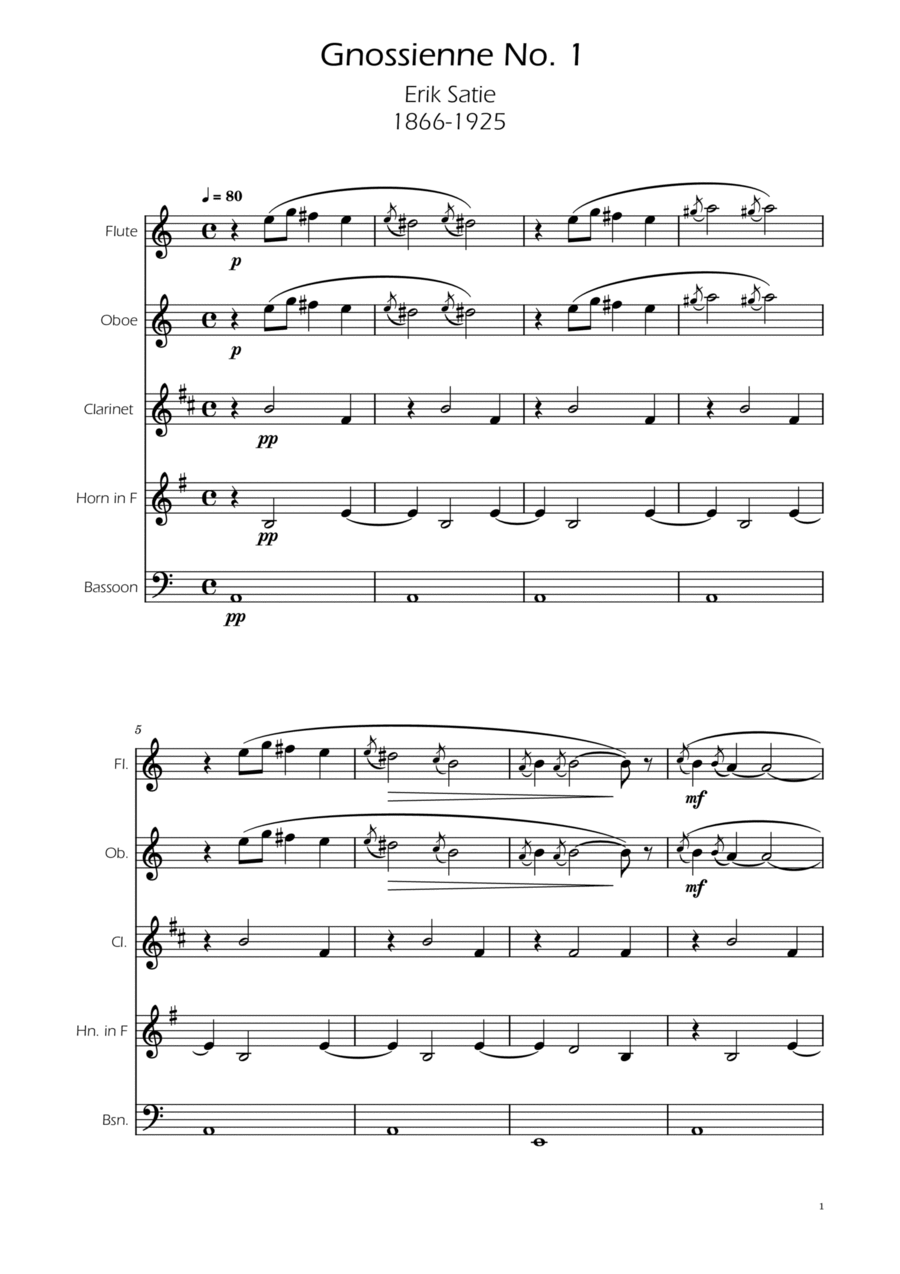Woodwind Ensemble,Woodwind Quintet Bassoon,Clarinet,Flute,Horn,Oboe - Level 3 - Digital Download SKU: A0.1474185 By Erik Satie. By Erik Satie. Arranged by Ygor Nunes. 19th Century,Classical,Film/TV,Instructional,Wedding. 17 pages. Ygor Nunes #1051815. Published by Ygor Nunes (A0.1474185). Here is an easy and beautiful arrangement of Erik Satie's Gnosienne n1 for a woodwind quintet.
